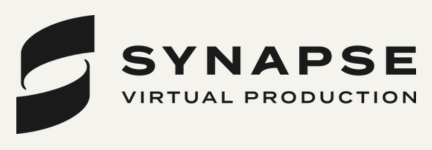
So, What Are Creatives Actually Earning?

It’s a question that’s been lingering in the creative world for years: How much are we really getting paid for our work? With rising costs of living, increased workloads, and the ever-changing landscape of creative industries, it’s more important than ever to understand what we’re worth, and where we stand in the pay game.
In response to this, the ‘Creative Earners’ salary survey, launched by the Association of Registered Graphic Designers (RGD), has been digging deep for over 20 years, giving Canadians a window into the earnings of creatives from coast to coast. With thousands of self-reported responses, this survey is a goldmine for anyone looking to get the real story behind salaries in the creative world, from art directors to UX designers, to ‘solopreneurs’.
If you've been following the calls for more pay transparency in creative sectors, you know how crucial this kind of data is. From news stories about salary disparities in major creative hubs like Toronto to the ongoing discussions about pay equity in design, this survey is shining a light on what’s really going on behind the scenes.
LBB’s April Summers sits down with Hilary Ashworth, executive director of the RGD, to unpack the latest findings and dive into the pressing need for fair pay and salary transparency in the industry. Plus, we explore why salary alone isn’t always the deciding factor when it comes to job satisfaction.
LBB> What trends have you observed in the ‘Creative Earners’ salary survey over the past few years? Are there particular industries or job titles that have seen significant growth or shifts in compensation? And if so, why do you think this is?
Hilary> People in experience design (UX/UI product, etc.) positions are now typically paid more than their traditional visual design counterparts. This makes sense, given that experienced designers are in high demand in our digital-first world. The World Economic Forum’s 2025 report on the future of jobs stated that UX design will be one of the fastest growing positions over the next five years.
LBB> Are there any notable differences in compensation based on geographic location within Canada? Are some regions seeing more growth in creative salaries than others?
Hilary> Compensation does appear to vary widely by province. In our most recent survey in 2022, Alberta had the most positions with the highest median salary of communications, marketing and brand managers, creative directors, graphic designers, senior graphic designers and solopreneurs. British Columbia had the highest median salaries for art directors and UX designers. Quebec was highest for design/creative service manager salaries, although the response rate was low there. Year over year, we find that salaries tend to be lowest in the prairies - Saskatchewan and Manitoba - and the Atlantic provinces, though it’s worth noting that these provinces also have the lowest response rates.
LBB> In your opinion, how does the Creative Earners salary survey contribute to fostering greater salary transparency within creative industries? In what ways does it play in challenging existing pay inequities?
Hilary> The Creative Earners report makes current salary information public knowledge. Having this information in one place makes it much easier for professionals to not only determine whether their salary, either current or the one they’re being offered, is fair, but it also gives them a resource to rely on if they want to negotiate. It’s a lot harder to deny an applicant a higher level of compensation when they show you, ‘this is actually the median role for this position’. It works the other way as well. We’ve heard from senior leadership who use the survey results to make sure the compensation they’re proposing is appropriate, or even competitive.
It’s our goal that by making this report free and accessible to all, we can start to eliminate the pay inequities we see in the industry because professionals will have what they need to advocate for fair pay, and to pay people fairly.
LBB> What would you say are some of the most surprising findings from the survey? Have there been any unexpected revelations about creative professionals’ earnings or the factors that influence pay in this field?
Hilary> One finding that consistently stands out is that women still earn less than men do. In our most recent report from 2022, women’s salaries were lower than men’s for every job title, with the disparity growing even larger for women of colour. Seeing this information always reminds us why we conduct this survey—so professionals have the numbers they need to advocate for proper compensation.
We also found that salary transparency is top of mind for jobseekers. The 2022 report found that 88% of respondents believe that employers should be required by law to include salary information in job postings, a 5% increase from the previous survey. A further 92% said a salary or wage range is the most important factor when applying for a job. It’s clear that salary transparency isn’t just a courteous thing to offer; it’s something applicants are actively seeking and expecting from employers.
And lastly, while salary transparency is crucial in the hiring process, salary alone is not enough to keep someone in a job. When respondents were asked why they left their last position, the most common response was because of a toxic work environment (20%), slightly more than leaving for higher pay (19%). This tells us that while professionals clearly value fair compensation, working somewhere with a positive culture and environment is just as important.
LBB> How do compensation trends in creative industries compare to other sectors? Are there certain creative roles that are now commanding higher salaries, and if so, why do you think this is?
Hilary> According to the 2022 report, creative/design directors are earning a median salary of $115,000 CAD. We’ve looked at data for directors in other sectors to compare—public relations, HR and finance, for example—and creative/design directors generally make less than all of them, especially compared to finance or accounting. This discrepancy could point to a lack of understanding of the business value of creative strategy.
As for roles that are commanding higher salaries, experience design positions are up there. The 2022 report found that interactive designers have a median salary of $116,500, while UX managers have a median salary of $137,000. Again, we think this points to the importance placed on digital-first branding and customer experiences.
LBB> Looking ahead, what changes do you anticipate in creative compensation, particularly with the rise of remote work, the gig economy, and AI tools in the creative process?
Hilary> When we released our first survey in 2021, after the pandemic started, we wondered if we’d see any changes in compensation with the sharp increase in remote work. Interestingly, salaries didn’t seem to be affected, and they still aren’t, even though most respondents work remotely or in a hybrid environment. We’ve actually found that the ability to work remotely is one of the most common benefits respondents receive. Overall, remote work doesn’t appear to negatively impact compensation.
Time will tell if we hear about design departments being drastically downsized. In our 2022 report, more design business owners, in-house designers and agency designers noted that their departments grew or experienced no change than they shrank. Interestingly, for the business owners whose teams grew, 41% stated they hired full-time employees, and only 18% stated that they hired part-timers, freelancers or contractors. So, it appears that hiring full-time is still the preferred option.
Trends change from year to year, though, so we’re looking forward to seeing the results of the current Creative Earners salary survey to see if there are new shifts in compensation.
The current Creative Earners survey is open until February 28. If you are a creative professional, billing and earning in Canada, visit the website to take part.















